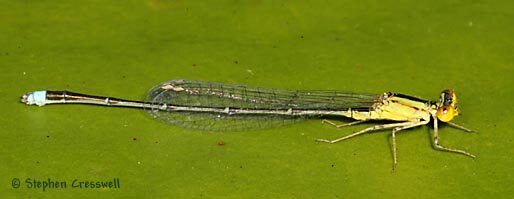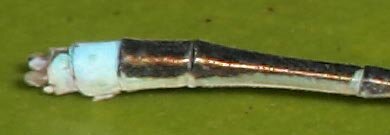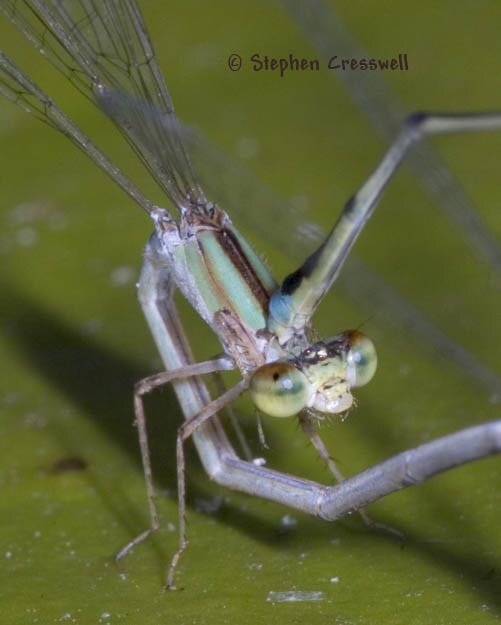

Family: Coenagrionidae
Length: 29-37 mm
At the time of its publication in 2004, Ed Lam's excellent book Damselflies of the Northeast was able to report only one West Virginia County (Preston) with any record of this species. But on August 31, 2004, the number of counties with records of the Vesper Bluet doubled, as the fellow pictured on this page turned up in Upshur County.
 It may well be that this species is not so uncommon in the Mountain State, but has escaped detection because few people are dragonfly-watching in the evening when this species is emerging from the weeds to loll about on lilypads. The species has even been observed ovipositing after nightfall.
It may well be that this species is not so uncommon in the Mountain State, but has escaped detection because few people are dragonfly-watching in the evening when this species is emerging from the weeds to loll about on lilypads. The species has even been observed ovipositing after nightfall.
In West Virginia, and in fact in all of the northeastern United States, there is no other damselfly colored like this one, so identification should be straightforward. The Vesper Bluet male has a bright yellow thorax, with just a hint of a black lateral thoracic stripe. The tip of the abdomen is blue.
The female is similar, but with the bright yellow replaced by light green. There is blue on the tip of the female's abdomen, but not so much as on the male, and the shade is paler. The female's segment ten is blue, while segment nine is blue on the sides but not on the dorsal surface.
Preferred habitat of the Vesper Bluet includes large ponds and small lakes, with plenty of floating or emergent vegetation. Lilypads are a favorite perch. |
| The tip of the male Vesper Bluet's tail is blue. Specifically, segment ten is blue on the sides, and segement nine is completely blue. |
 |
| Above: Lateral view of the thorax of the male Vesper Bluet. The dark lateral thoracic stripe is quite thin, and in fact may barely be present at all. |
 |
| The female Vesper Bluet is shown here in the mating or wheel position. In place of the yellow coloration sported by the male, the female has light green. The tip of the female's abodomen, not seen in this picture, is a very pale shade of green-blue, while on the male the abdomen tip is a light to medium blue. |